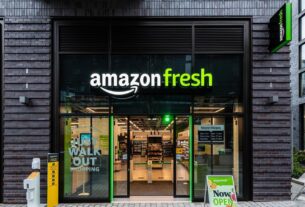The popularity of online shopping is declining and people are coming back to
traditional brick and mortar stores. Historically, department stores were the go-to
places for many shoppers because they offered personalized shopping experiences
and lifestyle advice. Malls were popular, too, because they were a one-stop-shop that
guaranteed steep retail discounts. Discount chains are aiming for the middle class. But
are department stores still relevant? What should shoppers look for in a department
store?
Online sales have declined since the pandemic
The impact of the Ebola virus has shifted the way we consume and shop. During the
pandemic, e-commerce helped consumers navigate lockdowns and restrictions. While
online sales have declined since the pandemic, this trend may persist across sectors.
In some cases, it may even widen the digital divide. However, in other cases, it may be
temporary and may be a reflection of a different economy.
Although the Ebola virus affected many countries, the global economy was spared the
brunt of the disease, and UK consumers have been largely able to shop online. Online
sales rose by nearly 32% and increased by nearly 40% among the 45-54 age group. In
January, almost half of UK consumers bought a product online. However, only 32% of
consumers surveyed said they would continue with their new ecommerce habits in the
future.
In the UK, retail sales declined in a number of sectors. The decline was the largest in
the health and beauty sector, which saw a drop of 29% year on year. Online-only
retailers, on the other hand, experienced a lower drop. Budget retailers and online-
only companies fared the worst, while luxury and premium retailers saw slight growth.
However, it’s still too early to determine whether the effects of the Ebola virus on retail
sales will last.
Despite these results, the pandemic has spurred a trend toward online shopping in
China. More than 70% of Chinese consumers will use mobile payments to shop online.
Travel restrictions in China have also restricted in-person purchases, which is another
reason why Chinese consumers are turning to cross-border online retailers. They’ll
have more choice, while paying less. Besides, Chinese consumers are increasingly
using their smartphones to make their purchases.
While home and garden categories saw the greatest growth in online sales, the same
trend can’t be said for clothing. Clothing sales, in particular, performed poorly, falling
by just 1.3% year on year. Meanwhile, mobile commerce experienced the largest
increase, increasing by 73% year on year. Despite this, e-commerce in the UK will
continue to remain relatively stable through the rest of the year. If you’re looking for a
way to boost your online sales, it’s time to consider international online shopping.
Shoppers are returning to brick-and-mortar stores
The e-commerce pandemic of the last two years may have affected the pace of retail
advancements, but retailers have responded by opening more brick-and-mortar
locations to attract consumers. Despite the economic uncertainty, top companies like
Walmart and Target report that a large percentage of their sales have returned in
person. In fact, they’re having trouble keeping up with the demand.
According to a recent survey, two-thirds of U.S. adults feel comfortable shopping in
physical stores again, and 53% plan to do so in the next six months. Seventy-three
percent of shoppers want to get in and out of stores quickly and easily. And 65 percent
are still concerned about the potential for exposure to others and distrustful of
retailers’ compliance with health and safety standards.
The recent COVID-19 pandemic has forced retailers to rethink their shopping
experience, tweak their delivery methods, and upgrade their omnichannel capabilities.
As a result, consumers are more willing to spend money and buy goods than they did
before. And while the e-commerce industry continues to grow, consumers will always
have the option to shop in brick-and-mortar stores. But how can retailers respond to
this?
The latest survey conducted by the U.S. Department of Commerce suggests that
consumers are returning to brick-and-mortar stores after the COVID-19 pandemic.
These numbers are encouraging, as a return to brick-and-mortar stores can attract
consumers back to their stores. If consumers are willing to walk into a physical
location to make purchases, the benefits are obvious. These retailers are making an
effort to attract shoppers back in, and many of these retailers have reported strong
results.
The Covid-19 pandemic swept through many parts of the country, causing nonessential
stores to shut down. In the aftermath of the disaster, online purchases soared, with
shoppers able to place orders for shelter-at-home delivery services. In addition, some
consumers bought goods online for the first time. Overall, e-commerce sales as a
share of retail sales grew by four percentage points to 16.4%.
Department stores are a one-stop shop for many people
In addition to having a vast selection of goods, department stores offer discount prices
for many of their products. While their prices may vary from one location to another,
many consumers find that department stores are a one-stop-shop for their needs.
Listed below are some of the benefits of shopping at department stores. You will find
that department stores provide more than just a one-stop-shop experience.
Department stores were first introduced in the early twentieth century in China. While
it is believed that expatriate Chinese from Australia were the ones to bring the concept
of a store to their native country, department stores were actually around before 1949.
Before the establishment of a mall in the US, the oldest department store in the world
was Bennett’s of Irongate in Derby, England. This department store was founded in
1734, making it the world’s oldest department store.
Today, department stores offer a wide variety of products, including brand name
products. In addition to selling name brands, department stores also sell cosmetics,
hair care products, and other beauty supplies. They often have experts in their
departments, enabling shoppers to find the right products for their needs. And if you’re
looking for designer clothes, you’ll likely find a great selection of these items in
department stores.
While many people find the convenience of shopping convenient, department stores
have a distinctly different value proposition. While one-stop shops save people time
and money, it doesn’t describe the uniqueness of their business. That’s because a
one-stop-shop can offer more than a one-stop shop. Besides saving time and money, it
also makes the company more attractive to new customers.
Discount chains target the middle class
As unemployment continues to decline, lower-income consumers are spending more at
Dollar Tree and Walmart stores. This growth in lower-income consumer spending
continues to outpace the growth of other consumer groups, according to Bank of
America. The growth in lower-income consumer spending is referred to as the
"discount store decade."
As incomes rise in the country, discount chains are drawing more middle-class
consumers. This demographic is more price-conscious than other segments of the
population. It’s easier for middle-class consumers to shop at discount stores if they
can find the items they’re looking for at low prices. Middle-class shoppers are much
more likely to use salespeople and displays than other shoppers, which makes them
an ideal target market for discount chains.
While traditional retail is suffering as more consumers opt for online options, discount
chains have found ways to adapt to the new economic conditions. Online shopping
platforms offer convenience and better prices. But while these new alternatives are
gaining market share, some of the oldest discount chains are still thriving. TJX,
Marshalls, and Home Goods are all moving forward despite the Covid-19 pandemic.
And Dollar General’s stock price hit a record high in October, rising to $53 billion.
While many consumers believe the quality of food at discount stores is similar to that
at supermarkets, 54% of middle-to-high-income consumers have visited a discount
store in the last three months. Further, 64% of middle-income consumers visit discount
stores to get bargains on premium brands. These numbers indicate that discount
chains have a huge target market. For this reason, the growth of these stores has
been well-documented.




